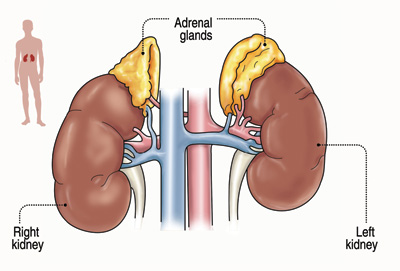News
2-in-1 complex keyhole surgery pulls patient away from danger
Not just one but two, dealing a double whammy to 56-year-old Jayanthi Silva from Mutwal, Colombo 15. Then major and complex keyhole surgery lasting seven hours – a bilateral adrenalectomy to deal with life-threatening Cushing Syndrome!

The complex keyhole surgery in progress at King’s Hospital
Two tumours, non-cancerous neoplasms, which usually are a rarity, were affecting both Jayanthi’s adrenal glands causing Cushing Syndrome and the only option was surgery.
The cause of the tumours was not known but Jayanthi had symptoms of weight gain, bloating of the face and low potassium levels. She was medically-compromised as she was also suffering from diabetes, hypertension and hypothyroidism.
“She was obese and could hardly walk. She had suffered several falls and there were spinal fractures and deep-vein thrombosis which were dangerous,” says Consultant Surgeon Dr. Bawantha Gamage.
The patient was referred to Dr. Gamage after being diagnosed as having tumours on both the adrenal glands by Consultant Endocrinologist Dr. Sachith Abhayaratna who explains that Jayanthi had Cushing Syndrome secondary to cortisol over-secreting adrenal tumours, creating a life-threatening situation.
Jayanthi says that in July 2019 (last year), she was leaving her home when she fell to a sitting position and could not get up without help. The same recurred at dinner-time and her husband had to raise her up.
“I didn’t know what was happening. I was not responsive,” she says, with a battery of tests while in an Intensive Care Unit for several days revealing that the potassium levels in her system had come down to dangerous levels.
By the end of last year, Jayanthi and her family knew that the only way out was the removal of the tumours and the adrenal glands. It was risky surgery. The date was set for March, this year, but the COVID-19 crisis compelled the surgical team to push it back.
For Dr. Gamage, who along with his team and other vital multidisciplinary colleagues got into action at the state-of-the-art operating theatre of the private King’s Hospital at Narahenpita, “the challenge was great”.
It was advanced complex surgery because there was the imminent danger of damaging the vital organ that is the liver and also the inferior vena cava (the vein that carries deoxygenated blood from the lower half of the body to the right atrium of the heart) which was ‘kissing’ the tumours.
The team had to consider all the risk factors and then choose between an open or laparoscopic surgery. They decided on the latter. The procedure entailed the removal of both the adrenal glands which could result in major fluctuations in blood pressure.
The success of the complex minimally-invasive keyhole surgery not only hinged on the expertise and skill of the surgeon but also the efficiency of the anaesthetist, the Sunday Times learns.
It was on July 6 that Dr. Gamage assisted by his junior surgeon Dr. S.H.R. Sanjeewa and Senior Registrar Dr. Viraj Abeykoon, performed the laparoscopic bilateral adrenalectomy, with Jayanthi being closely monitored by Consultant Anaesthetist, Dr. Nilanganee Lamahewage.
Dr. Gamage dissected the tumour on the left side with the patient lying on her right side in a procedure lasting four hours and then turning her exactly opposite, so that she was lying on her left side, he had dissected the tumour on the right side in a three-hour procedure. The left was more compromised with the tumour being a large seven-cms.
“The patient was under general anaesthesia being extensively monitored by the anaesthetic team,” he says, conceding that it was a strenuous seven hours (from 4.30 to 11.30 p.m.) for all of them.
He adds: “With one of the major complications being massive bleeding, we used the latest sophisticated laparoscope which has high-definition cameras. Our other advanced tools included an energy device to minimize bleeding (through cauterization) and ultrasonic dissection and bipolar diathermy.”
The anaesthetic team, meanwhile, had to keep an eye on the patient as her blood pressure could drop or shoot up suddenly, which required extensive monitoring with the arterial blood pressure monitor.
Happy that they were able to perform this complex and risky procedure successfully, Dr. Gamage smiles that the total blood loss during the entirety of the procedure was less than 100ml or half a cup.
“I am okay now,” says Jayanthi, adding that she was in the care of “maara (super) doctors”.
| All about the adrenal glands | |
| The major hormone-producers that are the adrenal glands (also known as suprarenal glands) are located above the kidneys. These triangular-shaped endocrine glands produce a variety of hormones including adrenaline and noradrenaline and the steroids aldosterone and cortisol. The hormones that are produced by the adrenal glands help regulate a person’s metabolism, immune system, blood pressure, response to stress and other essential functions.
|


